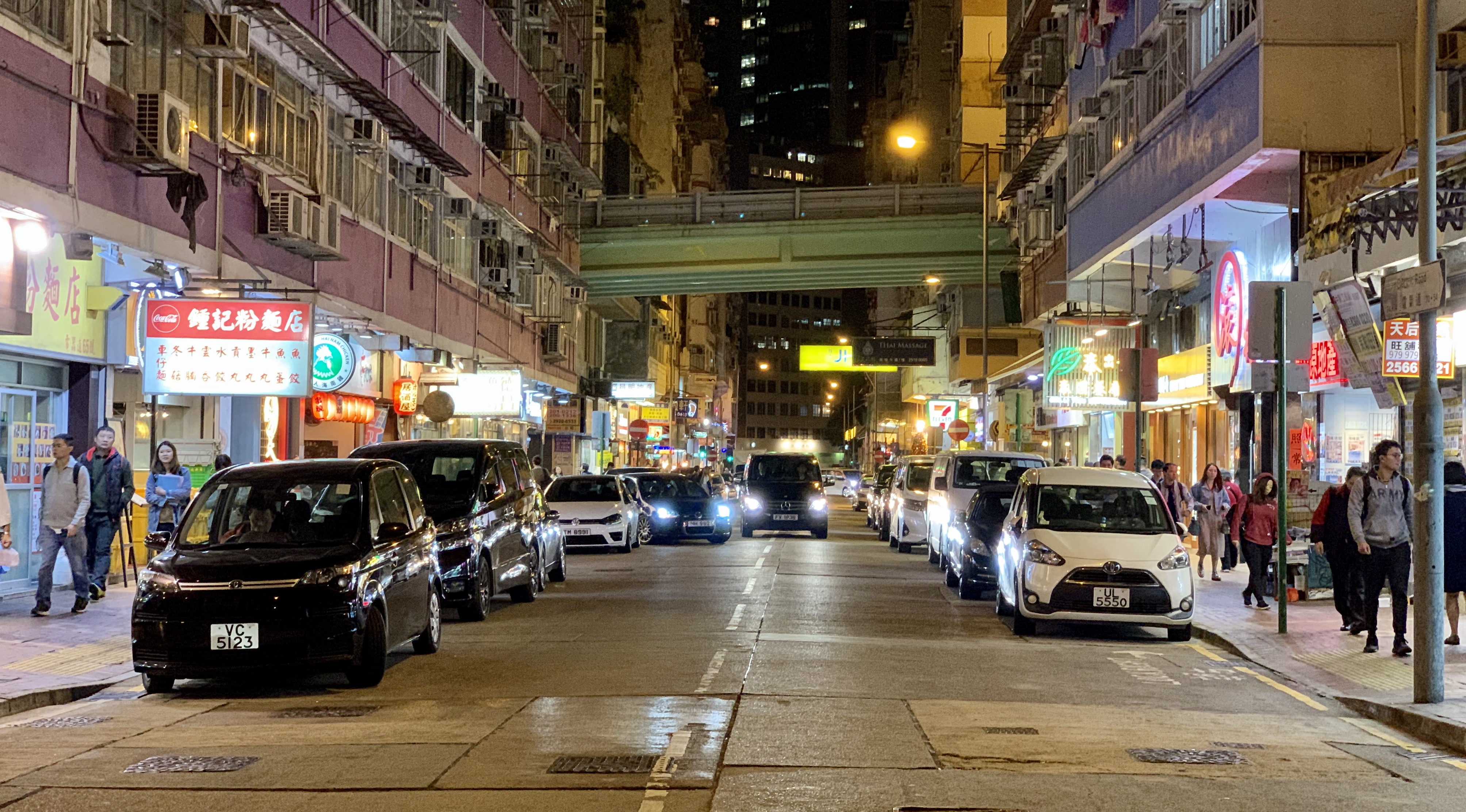In Hong Kong on a Wednesday evening I am looking for a spray bottle. It’s our anniversary, the original one, and I’ve purchased a succulent to honor it. The succulents I’d gathered over previous years got moved from San Francisco to the East Bay but not all the way here. So I sought a new one, and then flowers, and now a spray bottle to care for them. In Tin Hau this search means walking down the street, eyes open. Eventually it means a ten Hong Kong dollar purchase from a store that sells stationary, toys, and basic household supplies. Tucked in the back near scrub brushes and a cutting board I find two sizes of bottle and opt for the larger one, in bright translucent colors.
For years now we’ve been evaluating cities, measuring them against our desires and needs. From the earliest days of this site, when smiles were my underrated metric for economic growth in boomtown Shanghai, I’ve been watching places. In Houston the bicycle infrastructure, or relative dispersal of it compared to Shanghai, was what struck me. Gas stations existed on every other corner while repairing a bicycle required a mile or more of travel. This set of facts, once realized, described adequately the built environment, the preferences of locals, the density of jobs, housing, and food, and the danger of streets for pedestrians. After all, cyclists rarely cause death. And so Houston gave me a new way to consider cities, a way to review wherever came next.
In San Francisco I spent days considering elevation and microclimates, these subtle shapes of hill and weather that have huge impacts on residential desirability across the city. The fog is a force in SF, and neighborhoods are defined by their position relative to its reach. The Sunset remains affordable partially because, come evening, it is entirely within the fog bank. The rest of its affordability, or what little remains after twenty years of appreciation, is due to the lack of transit, either highway or train.
In Hong Kong for months now I’ve struggled to clarify my thinking. “I like it” and “It feels good” remain mediocre rationales. The cliche, while true, that we live in a city but can quickly access the mountains or ocean is not what pulled me here. Something else explains why walking home from our noodle shop in the evening makes us so happy.
And so my quest for a spray bottle. In America, a desire like this results first in an online search. In a location where travel is expensive, dangerous, and personally demanding, it’s no surprise to see delivery flourish and online shopping rise. This rise brings with it the lack of neighborhood unity due to decreased exposure to nearby residents, the failure of local small-scale retail, and the creation of a poorly paid and utterly dehumanized delivery class to take the transit risks and bear the costs. For those reasons as well as the related sedentary health effects, it isn’t a culture that appeals to me. But how to express this preference succinctly?
In Hong Kong on a Wednesday evening I go in search of a plastic spray bottle. I walk seven blocks in eight minutes before finding one. In those seven blocks I pass three 7 Elevens, two grocery stores, one fruit stand, one vegetable stand, and countless small restaurants. I am never alone. Many of my neighbors are outside walking dogs, doing errands, chatting with friends, or coming home from work or activities. I purchase the bottle and then some sushi for dinner from a take out place. It’s a nice night. People are eating outside or in line for bubble tea near the train station. The whole city feels alive and engaged. Walking home amidst all my neighbors it strikes me: this search is a way to evaluate cities. In Hong Kong the fastest way to find something is to walk out of the house and start looking.
I remember coming home one day at the beginning of this year, not long after moving, excited with a discovery. “Troye Sivan is playing in May” I said, entering the house. “I saw a poster walking home.”
At the time we laughed about how learning about upcoming concerts and music releases from posters plastered on walls felt like New York in the 90’s. Now I think that for as long as we’ve lived here, we’ve learned by walking outside. That’s pretty new for me, a child of the American countryside. In rural America the fastest way to get anything, before Amazon, was to get in a car and drive 20 minutes. Walking was a good way to discover blackberries, and occasionally animals.
And so, one year in, I have a new way to evaluate cities, and a further explanation for why we love Hong Kong. What’s the fastest way to find something? It’s one more way to think about the places we inhabit, and what shapes the sense of life and community in each.
